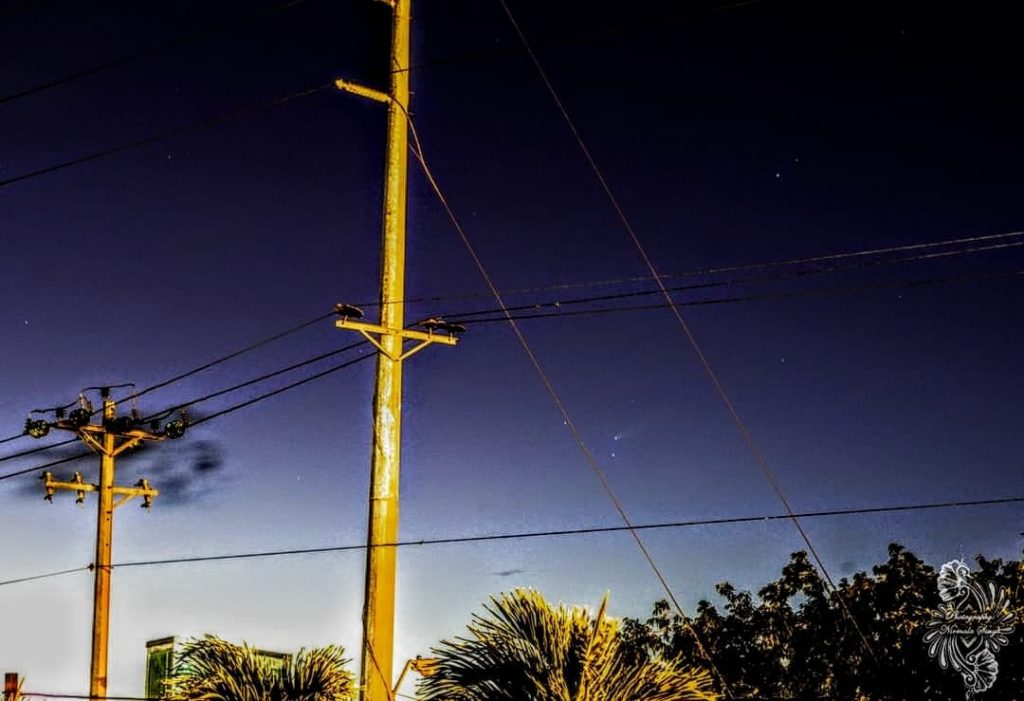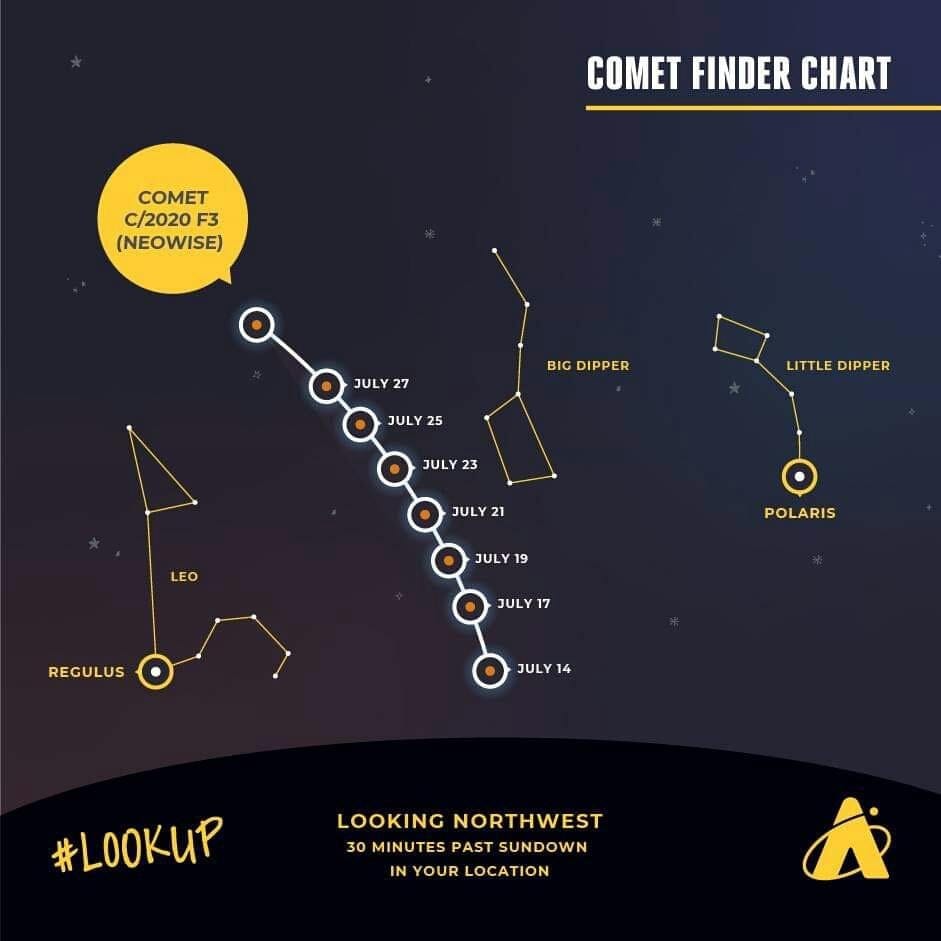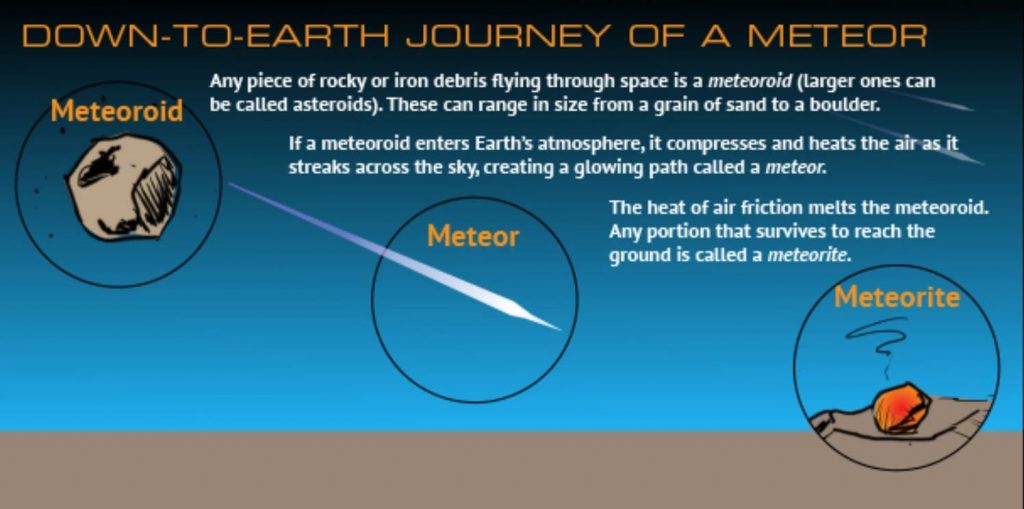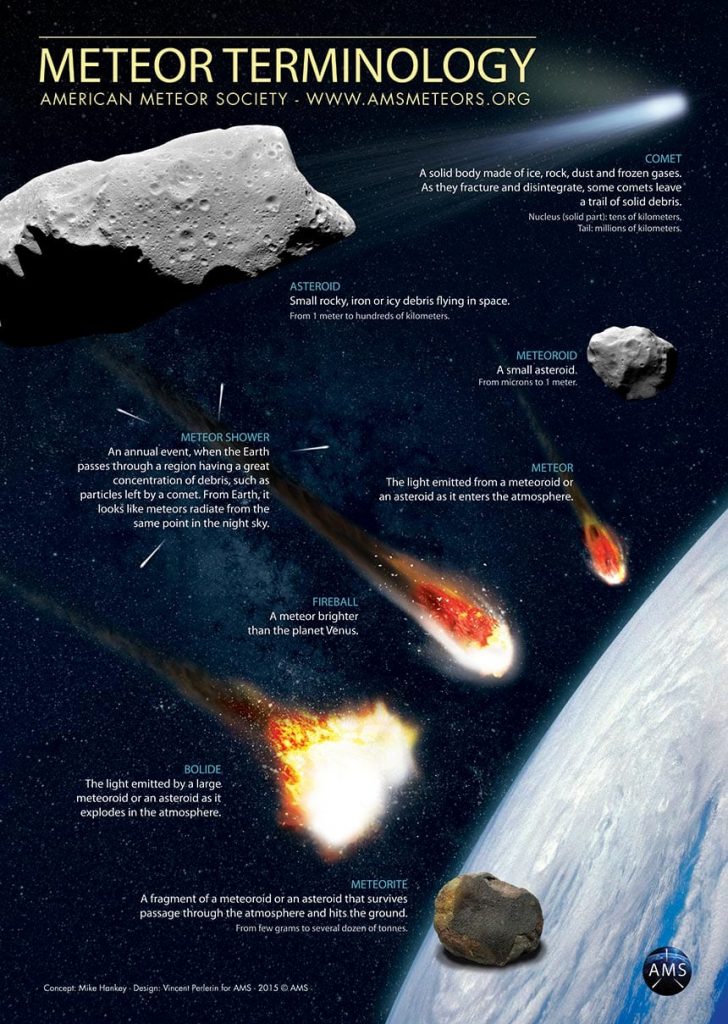Comet NEOWISE has been spotted in T&T’s skies for the first time on Saturday night by several sky gazers. This comet will stick around nearly every night, with peak visibility just after sunset in our northwestern night sky.

What is NEOWISE?
North coast, Trinidad. Third time’s a charm they say… After 2 failed attempts to see this ‘once in a decade’ comet…
Posted by Kazim Daniel on Saturday, July 18, 2020
NEOWISE, formally known as C/2020 F3 NEOWISE, was discovered on March 27, 2020, by NASA’s Near-Earth Object Wide-field Infrared Survey Explorer (NEOWISE). The comet reached and survived its closest approach to the Sun (perihelion) on July 3 and has since become brighter with every passing day as it moves closer to the Earth.
Comet NEOWISE will make its closest approach to our planet on July 23, 2020.
Where to see NEOWISE?
Currently, the almost three miles (4.83 kilometers) wide comet is visible with naked eyes from very dark Northern Hemisphere locations during a short window of time just after sunset.
To see it, find a dark spot with little to no ambient lighting and look up—the darker your viewing location, the better you will be able to see this icy visitor from outer space and its tail.
While it is visible in T&T’s skies to the naked eye, it is more visible by using binoculars to first locate it and then look at it with naked eyes. Binoculars are especially helpful in spotting the comet’s majestic split tail. Most household binoculars will suffice.
Since the comet’s path brings it very close to the horizon at most locations, we recommend that comet gazers find an observation point with an unobstructed view of the horizon.
You can also use timeanddate.com‘s Night Sky Tracker to look at where exactly in the night sky you should be looking.
When to See Comet NEOWISE

You’ll be looking towards the northwest after 6:31 PM every night this week (July 18th to the 28th).
NEOWISE started as an early morning comet and is quickly developing into an evening comet. At the moment, it is in the constellation Lynx and will move into Ursa Major by mid-July.
Astronomers anticipate that it will remain bright and be visible with naked eyes or with the help of binoculars throughout the month of July. By early August, however, the comet is expected to fade away as it finds its way back to the outskirts of our Solar System.
If you are in the Northern Hemisphere, make sure you take the time to catch a glimpse. This comet will not be back for a long time—6,800 years, to be precise! And while you are at it, don’t forget to look out for Mars, Jupiter, and Saturn!
It’s A Comet – Not an Asteroid or Meteor

Comets are small celestial bodies that orbit the Sun. Primarily made of dust and ice, they are thought to be remnants of the formation of the Solar System.
Comets do not make it to the Earth’s surface, they are thought to come from 2 places in the Solar System:
- The Oort Cloud is a region almost a light-year from the Sun. Oort Cloud comets have very long orbital periods, spanning several million years, and are known as long-period comets.
- The Kuiper Belt is a region beyond the orbit of the planet Neptune. Kuiper Belt comets tend to have a short orbital period, usually around 200 years, and are therefore also known as short-period comets.

One of the distinguishing features of a comet is that most of them develop a tail, known as a coma, when they come close to the Sun.
Away from the Sun, comets are frozen celestial bodies that are hard to detect. However, as a comet comes closer to the Sun, the Sun’s heat and radiation vaporize its ice and dust. These vaporized gasses collect dust and stream from the center of the comet, just like a tail. This tail can be thousands of miles long.









